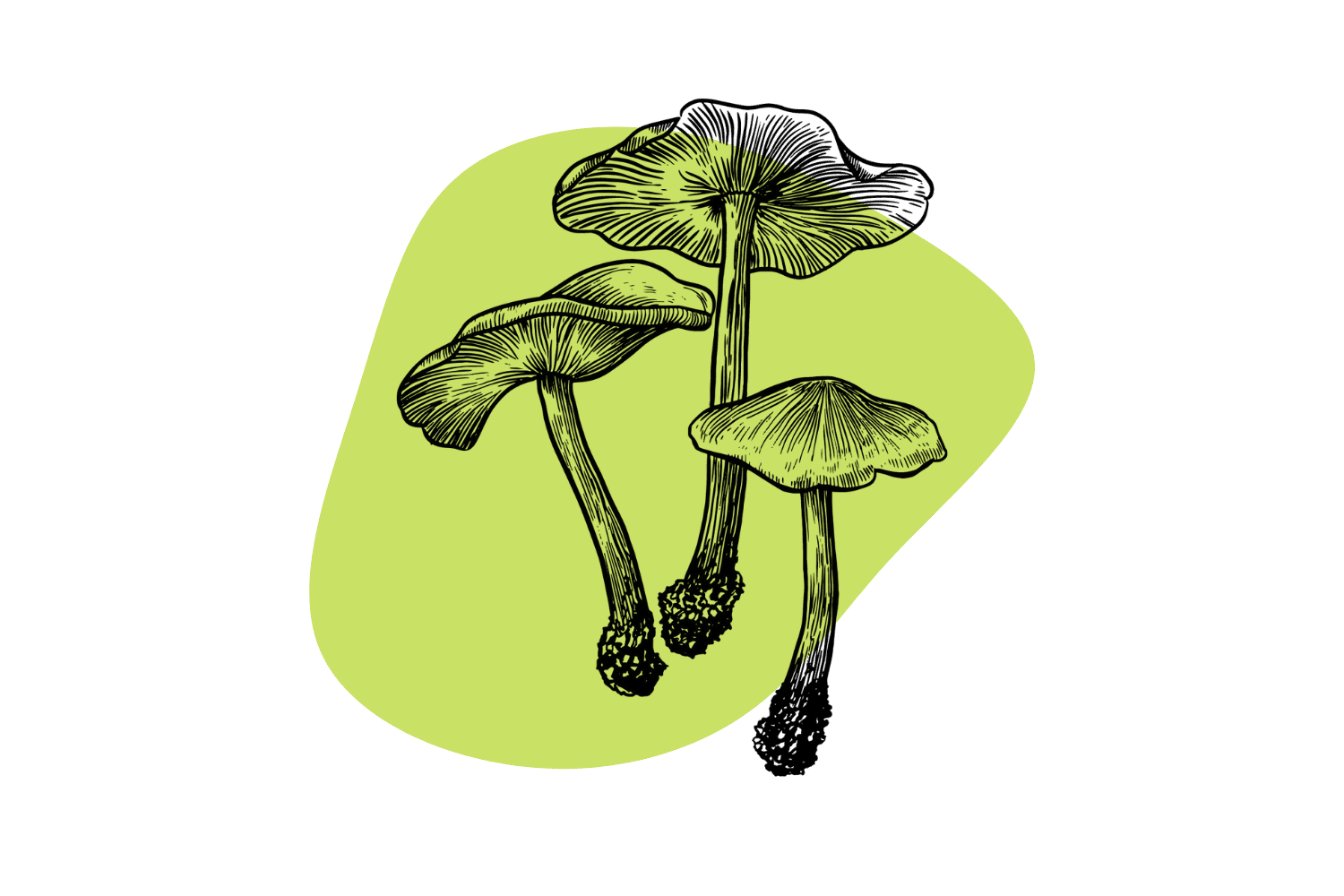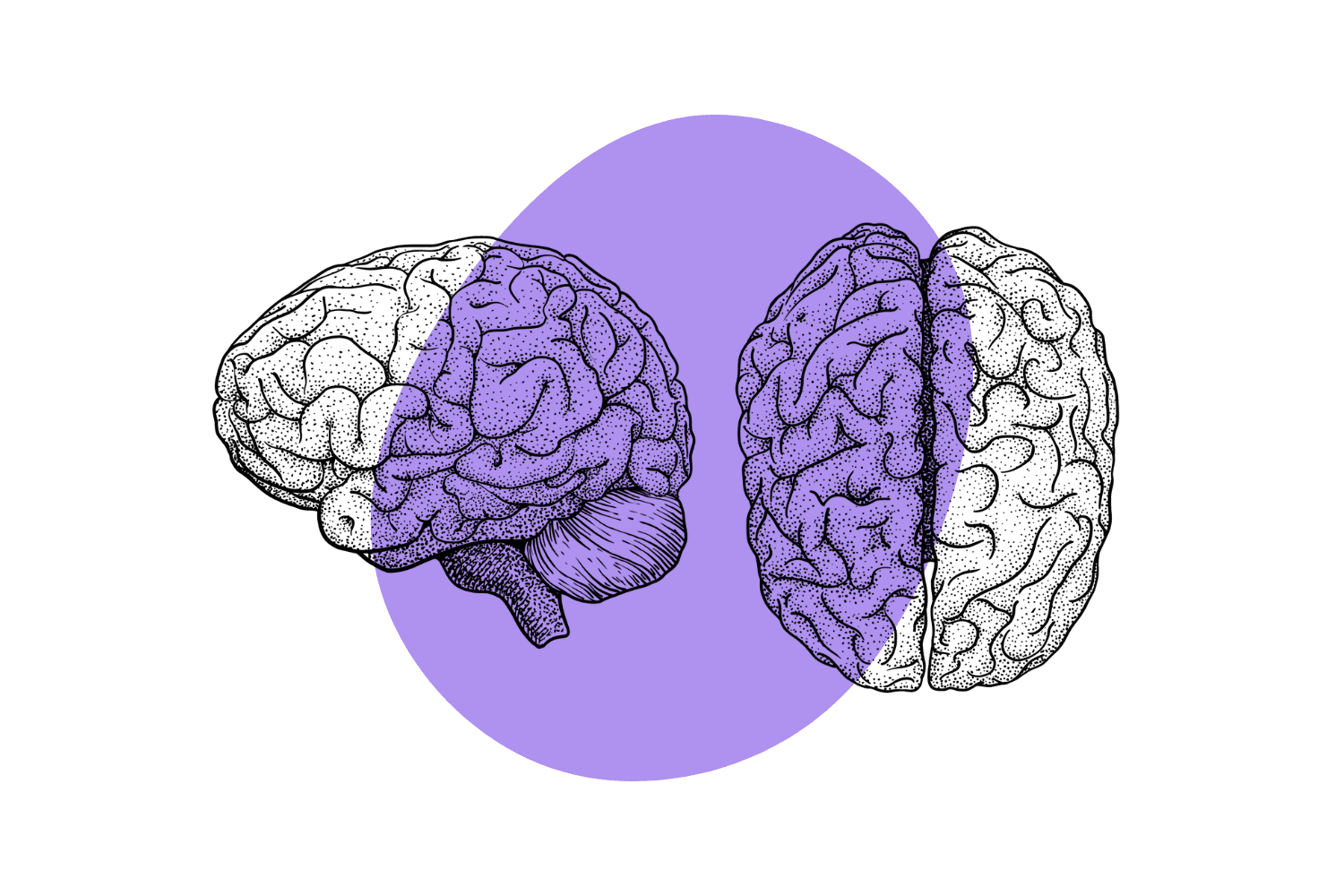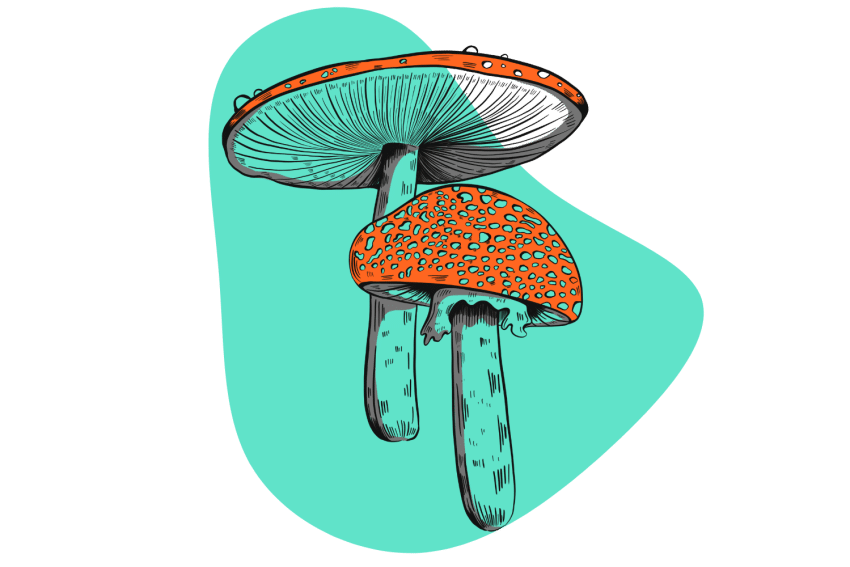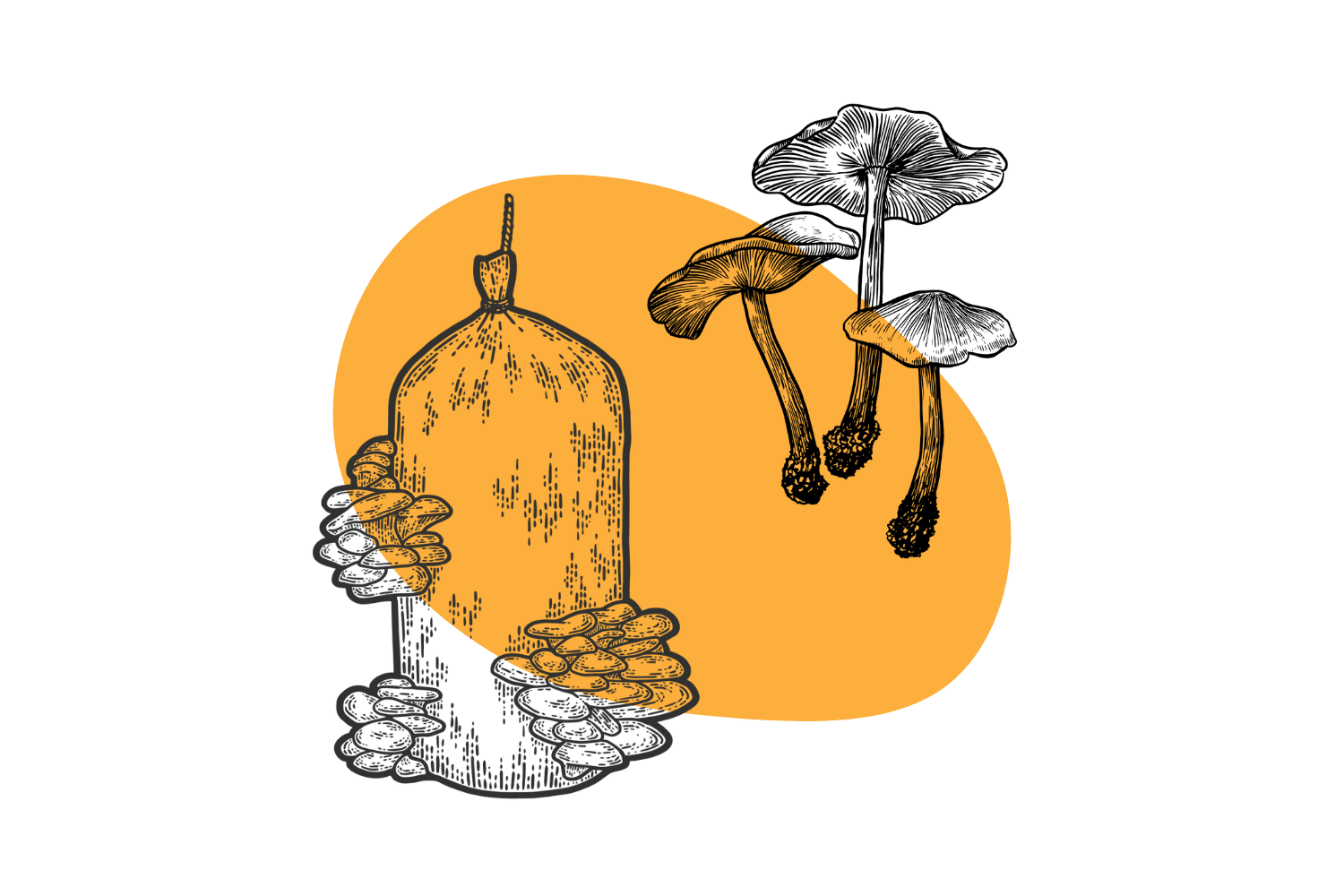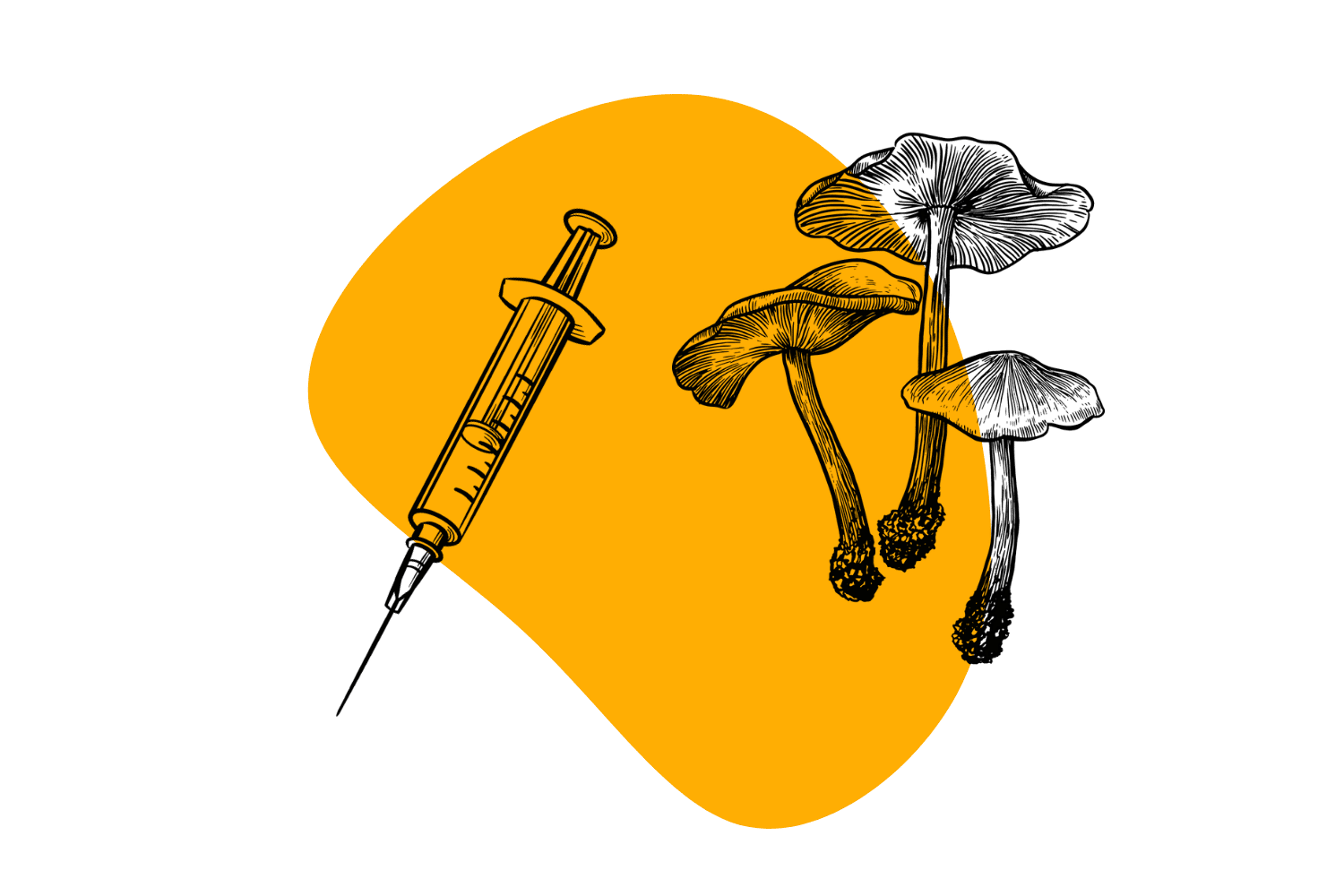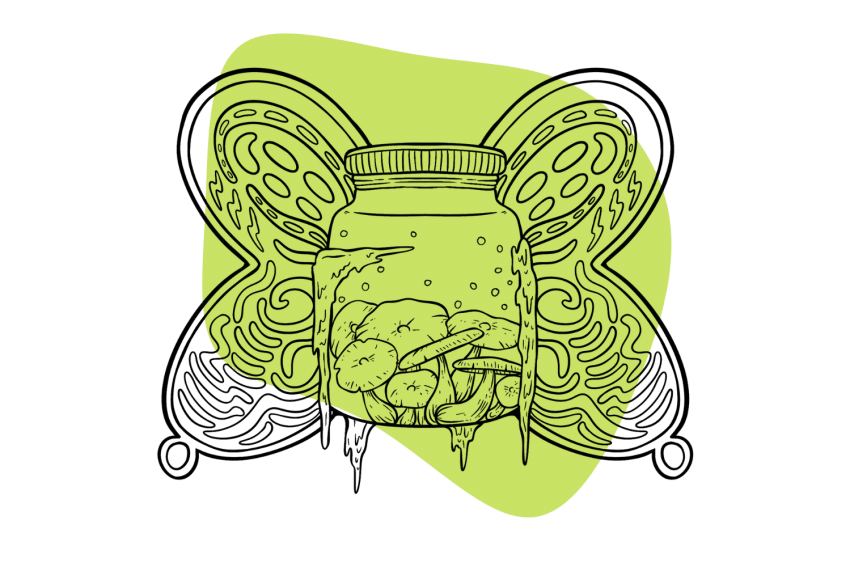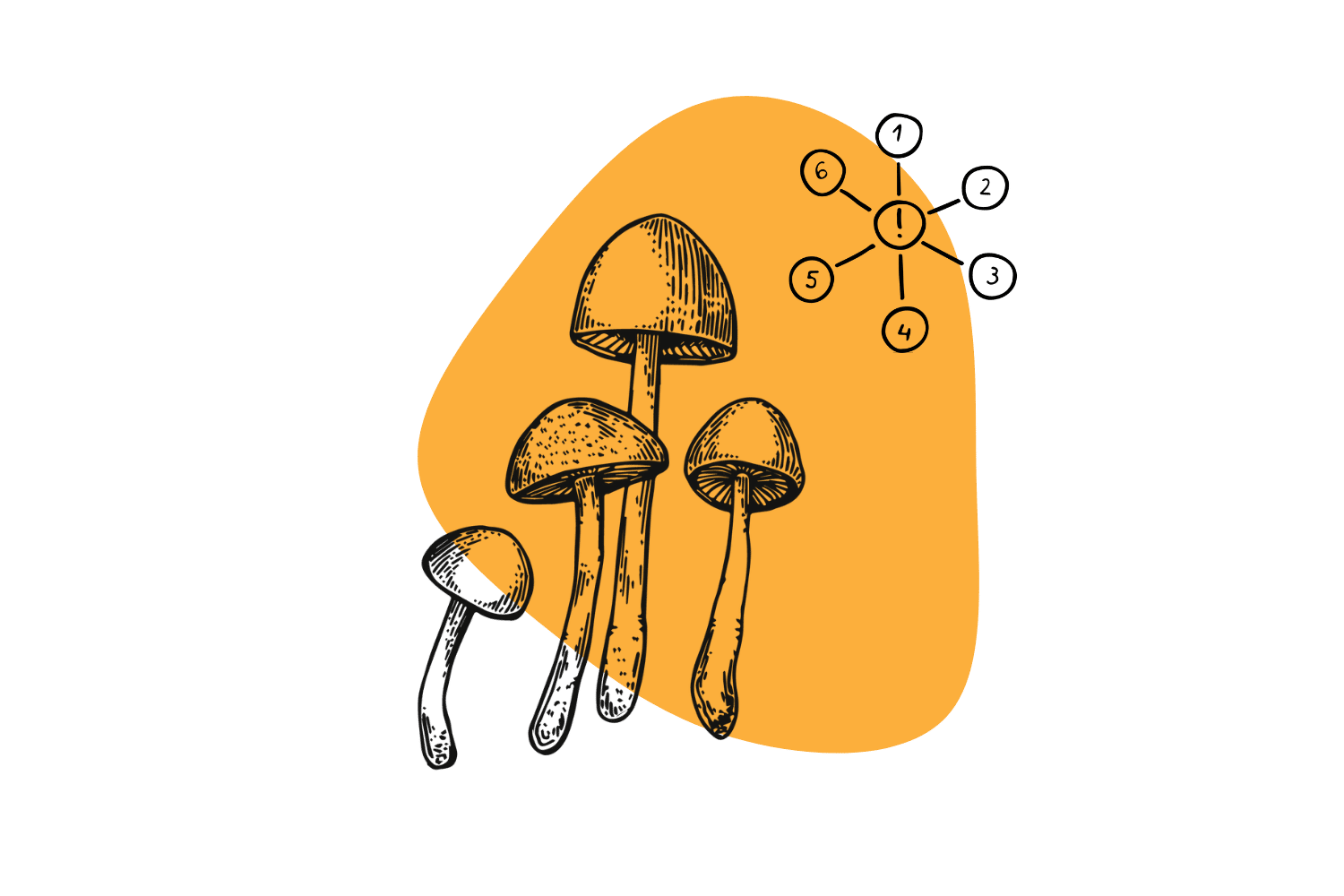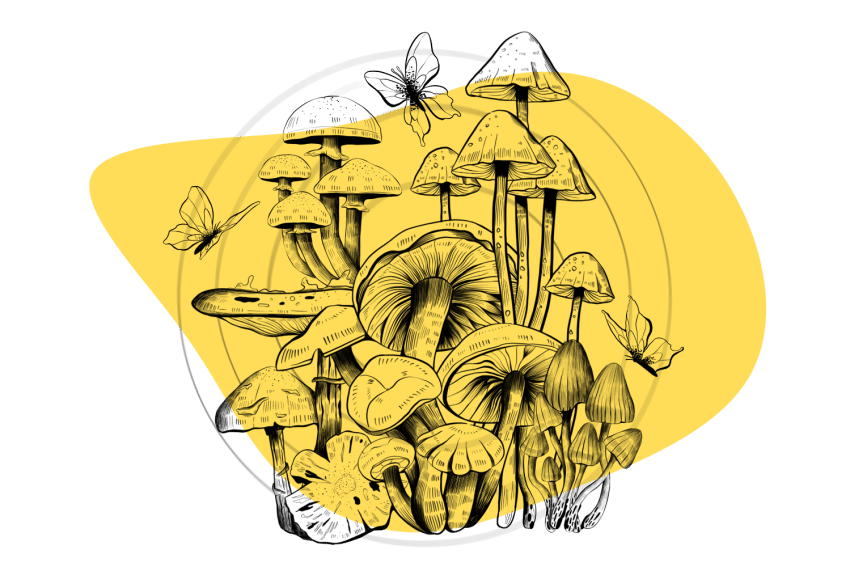Mushroom Symbolism: Prehistoric Representations & Modern Adaptations of Psychedelic Artwork
Mushrooms have been featured in cave art, tapestries, and religious symbols dating back nearly 10,000 years — and potentially much longer.
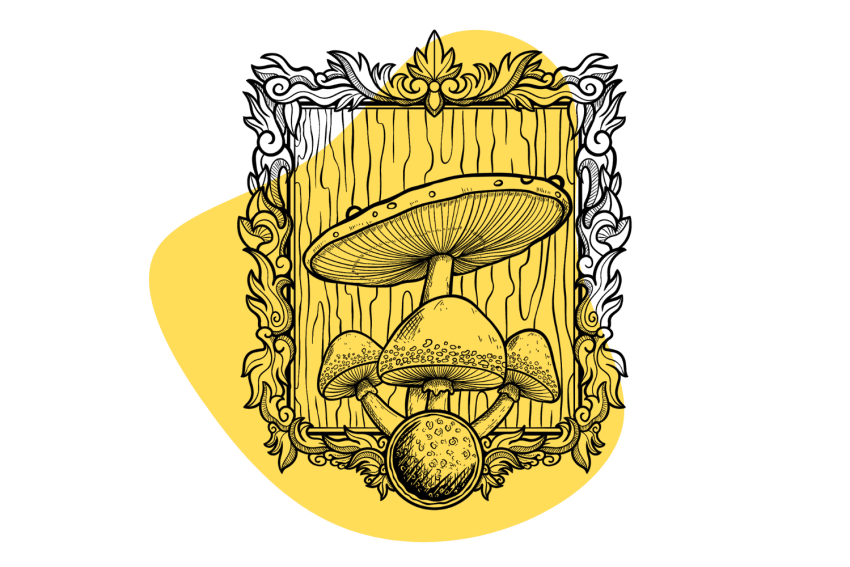
Psychedelic mushrooms — both “magic mushrooms” and the Amanita muscaria (or “Fly Agaric”) mushroom — evolutionarily predate humans by millions of years.
However, humanity caught on to their powers quickly — and we have the symbolism to prove it.
Evidence of the use of mushrooms goes back at least 7,000 years. Some of the more questionable examples go back as far as 10,000 years. Many scholars believe the consumption of magical mushrooms may even predate our final evolutionary jump to “humanity” altogether (see: the stoned ape theory).
As such, it shouldn’t be a surprise that mushrooms show up throughout art, culture, and virtually anywhere there is evidence of humanity.
In this article, we’re going to cover the different forms of mushroom symbolism throughout our history, along with what they might mean.
Magic Mushrooms in Cave Art: The Oldest Mushroom Symbols
Cave art withstands the test of time due to its protection from the outside world — and it’s not unique to Homo sapiens either. The oldest cave art we know of today is spread between three caves on the Iberian peninsula in Spain, dating back 64,000 years (20,000 before “we” would show up there) [1].
The intricate patterns of the artwork blew the lid off the concept of Neanderthals being archaic or inferior to us at the time. Artwork in caves worldwide ranges from literal to abstract geometric patterns.
The latter has led researchers to question whether “shamanic trances” were a part of all prehistoric cave art. Of course, it’s always possible the original artists were just trying to make something visually appealing at the time — it’s not like they had a TV or anything.
Related: What is Shamanism?
Additionally, a “trance” doesn’t always have to involve psychedelics (let alone mushrooms specifically). Still, there are some interesting cases of psychedelic prehistoric art in communities we know used magic mushrooms with a compelling argument for a correlation.
Let’s start with more concrete examples before we break down this theory a bit further:
Read more about these and others in our article about Magic Mushroom Art.
Mushroom Cave Art in Algeria (~7000–5000 BCE)
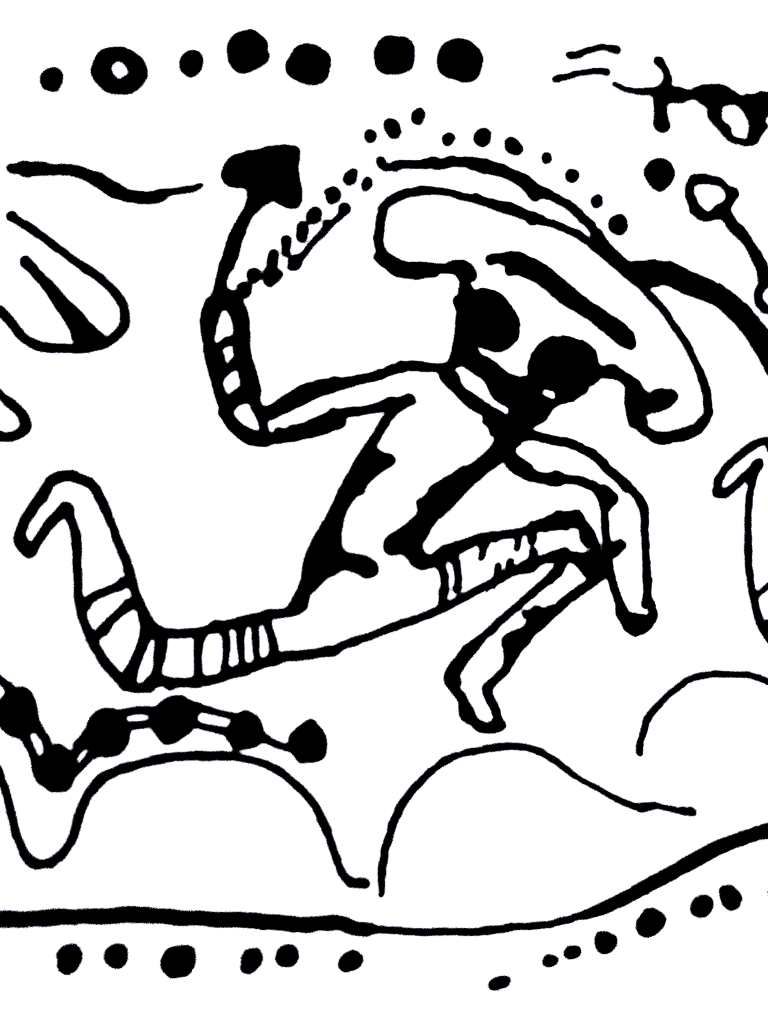
The first instance of existing cave art with a broad consensus of psychedelic focus is located in caves throughout the Tassili n’Ajjer plateau [2]. Giorgio Samorini first reported the connection in 1992, noting repeated representations of “mushroom effigies.”
These included:
[P]olychromic scenes of harvest, adoration, and the offering of mushrooms, and large masked “gods” covered with mushrooms, not to mention other significant details, lead us to suppose we are dealing with an ancient hallucinogenic mushroom cult.
The first major connection is a representation of mushroom-headed humanoids prancing in a long row of repeated images. Lines connect both with the mushrooms they are holding to themselves and with the other dancers, symbolizing an interconnectedness.
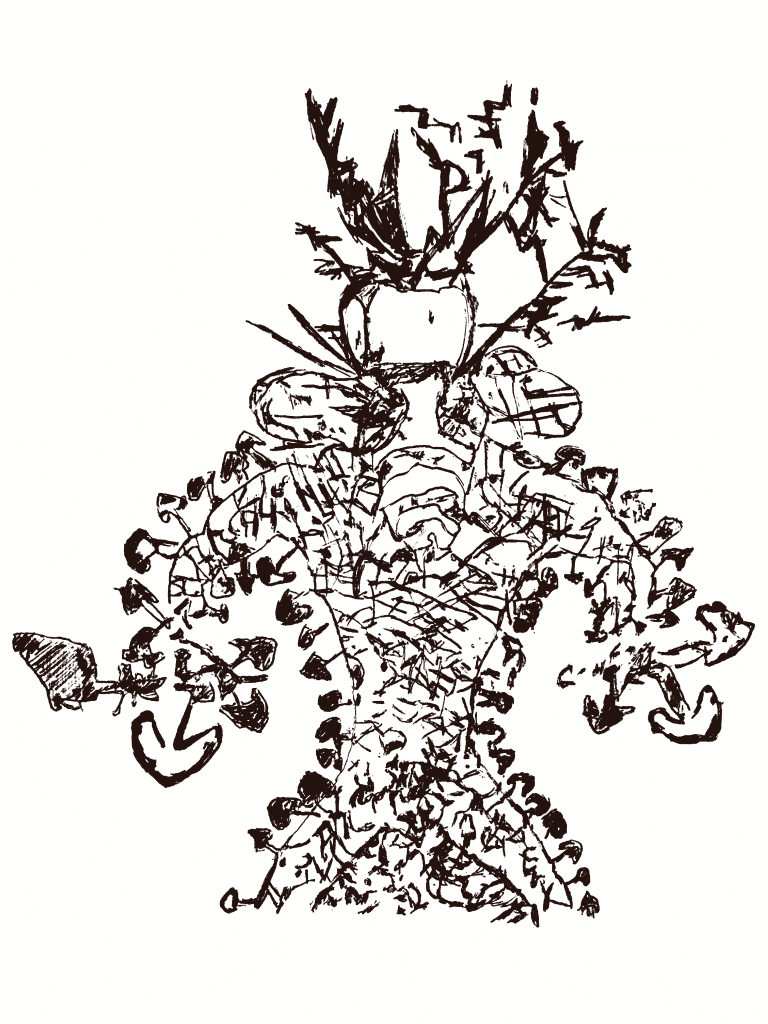
Another, nicknamed the “Tassili Mushroom Man,” is a masked being covered with mushrooms. Some consider this to represent a shamanistic figure or may even be an expression of the psychedelic state — “becoming the mushroom,” so to speak.
These are two of the more powerful ones, along with another painting depicting “a series of masked figures” with dancers handing out mushrooms. The scene is “surrounded by long and lively festoons of geometrical designs of different kinds.”
Many believe this scene depicts a ceremonial celebration with magic mushrooms among some of our earliest ancestors.
Mushroom Cave Art In Spain (6000-4000 BCE)
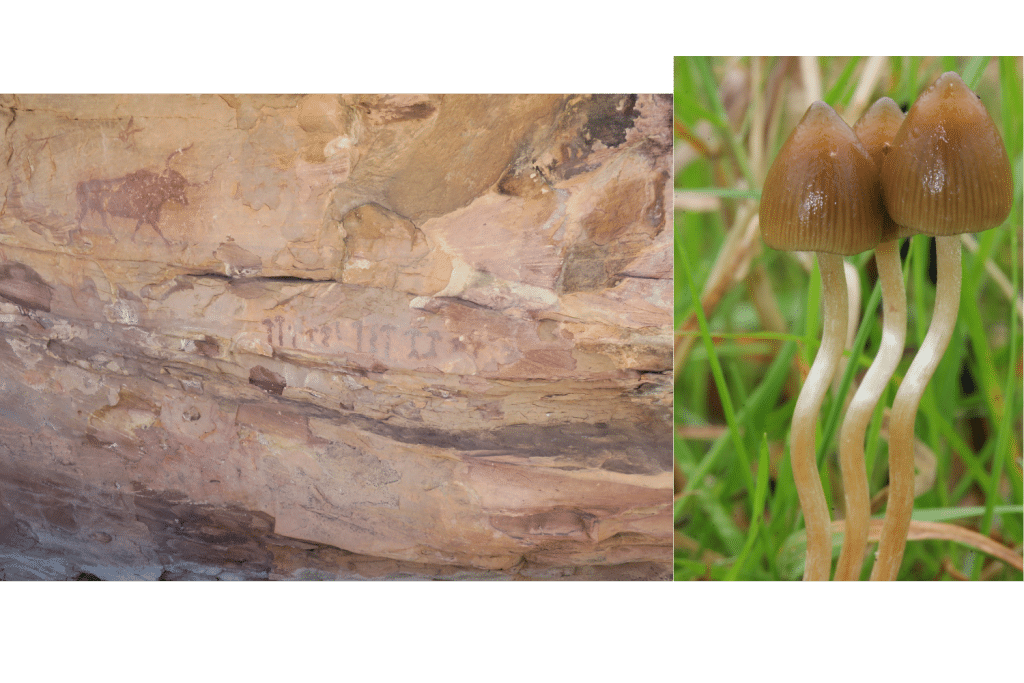
Around the same time (evolutionarily, at least) as the cave paintings in Tassili, prehistoric humans painted this mural at the Selva Pascuala caves in Spain. Thirteen mushroom-like figures stand alone next to — among other objects — a bull with large horns.
Compelling links between the physical characteristics of some psilocybin-containing mushrooms and the mural enable researchers to confirm it’s a representation of magic mushrooms [3]. Comparing the mural to the European native “Liberty Cap” mushroom, it’s easy to see a striking resemblance.
While the mushrooms have different orientations and other slight variations, they all resemble the same species:
Each consists of a vertically oriented, stalk-like lower portion varying from straight to sinuous, apparently representing the stipe, capped by an upper portion suggesting the pileus (or cap), convex to bluntly subconical in form.
Between evolution/extinction, changing climates, and whatever else 5,000 years might buy us, it’s hard to pinpoint exactly which mushroom this painting represents.
The authors of this study don’t think it was the Liberty Cap but argue for a similar mushroom exclusive to the Pyrenees mountains (~170 miles away) — Psilocybe hispanica.
While this points to them requiring a far higher elevation than the lowland caves the mural is in; authors find it likely “P. hispanica has a wider ecological distribution than is presently known.” Resembling the Liberty Cap pictured above, hispanica’s main differentiator is its cap which extends further outward rather than draping down, as they do in the painting.
Furthermore, researchers point to a connection between the bull and this mushroom which commonly grows in horse dung. While nobody has exclusively pointed to these mushrooms growing in the dung of cattle, other dung-loving funguses typically don’t care much which animal left its meal.
Mushroom Cave Art in Siberia (1000 BCE – 1000 CE)
Located in the North East corner of modern-day Russia, the “Pegtymel Petroglyphs” comprise an array of remaining symbology from no earlier than 1,000 years ago [4]. Among them are a series of humanoid people with mushroom caps resembling the Amanita muscaria mushroom.
Surrounding them are scenes of hunting — including a dead dear they appear to be dancing around — leading many to conclude they may have used the mushroom and symbols as a form of “hunting magic.”
This is the name researchers give to primitive religions built around better fortune when hunting or fishing among hunter-gatherers. Big hunts might include ceremonies, spells, or rituals and, judging from the petroglyphs, may have included psychedelics.
Above the cave art with the “amanita-headed” people is a man in a boat getting ready to spear a whale and other depictions of animals being killed or carried after a successful hunt.
Is All Cave Art “Psychedelic?”
Some researchers question if psychedelics may have been partially responsible for our “creation” of art altogether [5]. Here’s a brief rundown of some of the less-obvious possibilities:
- Round/Mushroom-Heads — In Africa, there is a 2,000-year period of cave art called the “Round-Head Period.” During this time, artists depicted humans with large, bulbous heads. Other cultures went further, like the aboriginal tribes in Australia, whose style is dubbed “Mushroom-Head” due to the heads flattening and curling around the shoulders.
- Psychedelic Trances — “Trances,” which don’t necessarily have to include drugs, might be the subject of several depictions of cave art. Many question whether the geometric patterns, motifs of humans transforming into animals, and more might be psychedelic in nature.
- Mushroom-Like Objects — Archaeologists don’t like jumping to “mushrooms did it.” The 12,000-year-old remains of Gobekli Tepe include imagery of a mushroom-headed woman head violently giving birth. Archaeologists think this may depict the head thrashing from side to side. Other mushroom-like art is often interpreted as onions, umbrellas, halos, crowns/hair, and more.
- Hidden Imagery — If psychedelics comprised an element of culture or religion, it’s likely there was a social exclusivity to them in many instances. In these cases, art would likely symbolically depict mushrooms instead of being straightforward, and we don’t have a way of confirming with our ancestors what they may have meant.
To check out these examples and many others, check out our recent post: “Cave Art, The Shamanic Trance, and Ancestral Psychedelia.”
Other Ancient Mushroom Symbology & Art
Mushroom symbology extends far beyond the caves, and we continued to include it in art, mythical figures, and more. Over time, the puritanical and prohibitive mindset has largely won worldwide, but this wasn’t always the case.
Throughout history, people have freely included psychedelics in their creations and pointed to its power through art. Here are some of the earliest examples of mankind’s attempt to fashion a mushroom idol.
Mayan / Mesoamerican Mushroom Stones (~1000 B.C.E–1000 C.E)
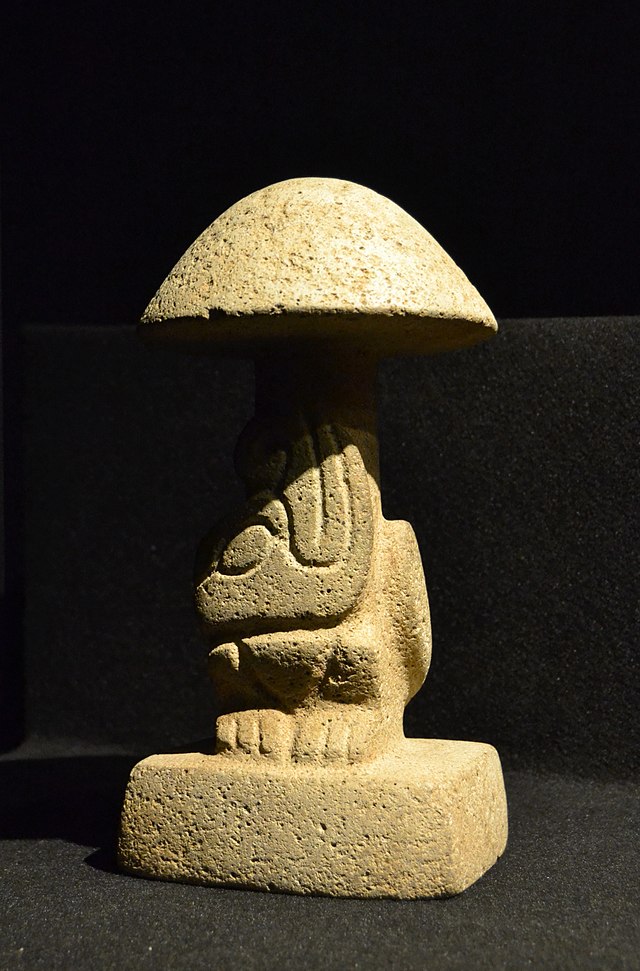
The brutal colonization of the Americas resulted in the erasure of much of the culture from Mayan and other Mesoamerican cultures. What did survive the test of time often paints an incomplete picture of a vast and advanced civilization — one which revered psychedelic mushrooms.
One of the oldest examples of this is the stone mushroom statues found in various forms throughout the area. For over 2,000 years — from 1000 BCE–1000 CE) — these statues were being created (albeit not continuously) [6].
The mushrooms they represent aren’t exclusively hallucinogenic, but the Amanita muscaria mushroom shows up predominantly among Guatemalan stones. Another place this mushroom may show up is in the surviving Mayan codices (panels recording their history and philosophy).
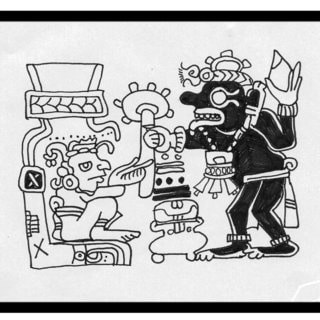
In the above panel, a man sitting on a throne is receiving what appears to be a mushroom with several points on top (similar to the white flecks on the cap of the Amanita) from an other-worldly being [7].
We’re still unsure if this represents the Amanita mushroom — some suggest it is an incense wand — but we know Mayans revered mushrooms from several other sources, and it seems to be a good bet.
Peruvian Mushroom Art (1200 BCE–1500 CE)
Peru has been the home of various cultures throughout the thousands of years people have been settling there. From the Cupisnique culture (1200–200 BCE) to the brutal colonization of the Incas by Spain in 1532, mushroom symbology abounds [8].
There were two different areas of cultural development happening simultaneously in the highlands — or mountainous region — and coastal areas of Peru. Eventually, the Inca empire would rise from the highlands, taking over the coastal areas through conquest, incorporating elements of many of the cultures they absorbed (all of which seemed to enjoy mushrooms).
Let’s take a quick tour through the history of mushroom symbolism and the formation of civilization in Peru:
Cupisnique Mushroom Art (Coastal) (1200–200 BCE)
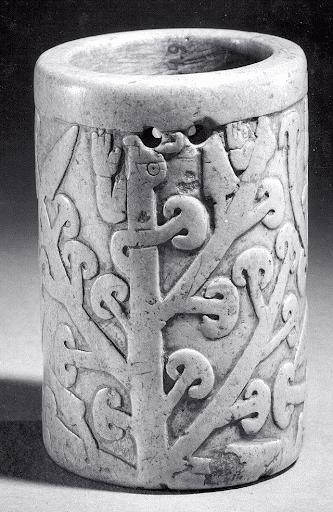
This beaker represents mushrooms growing out of a tree, and some suggest it represents “the tree of life.” This has led researchers to conclude mushroom use has gone back as far as people have been settling in the area.
The presence of mushrooms in Cupisnique culture suggests mushrooms in Peru were known and used as long as in the oldest Meso-American societies, like the Olmec, who have been shown to have used mushrooms.
What’s interesting about finding an artifact like this is the suggestion of many more years of prior use before it. Cupisnique culture may have discovered the mushrooms themselves, but it’s more likely they were continuing a tradition predating them.
Cupisnique culture, as one of the oldest in the coastal areas of Peru, would go on to influence the Paracas, Moche, Chimú, and eventually the Inca empire itself.
Mushroom Symbolism In Puracá/Puraká Culture (Highlands) (1200 BCE–400 CE.)
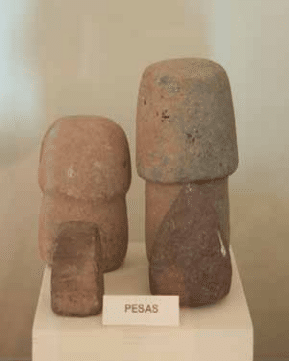
The mushroom stones from the highland culture of Puracá are inexplicably labeled as “weights” by the Museo de Pukera in which they reside. They clearly resemble a mushroom and stem, and other surviving artwork (though rare due to the age) also suggests an influence from mushrooms on this culture.
While a prehistoric dumbbell prototype is possible, the shape doesn’t really make sense for it. You can’t hold them sideways, and if you’re holding them vertically, why not just use a straight cylinder?
Another argument suggests these are phallic figures used for fertility rituals. This was a common belief of mushroom stones early on in their discovery by naysayers, but the prominent representations in later art alone make it seem more likely these point to mushrooms.
Additionally, it would seem likely for the original creators to have made the stones anatomically correct at the top if this were the case. Why go through all the trouble of carving a penis statue just to not include a slit or hole across the top?
Even 7th-grade boys know to include that when creating “phallic representations.”
Like the coastal civilization above, Pukará would go on to influence the many “highland” societies to develop in Peru. This includes the Wari and nearby Tiahuanaco cultures, who would also go on to influence the Incas.
Mushroom Art Among the Paracas (Coastal) (800–100 BCE)
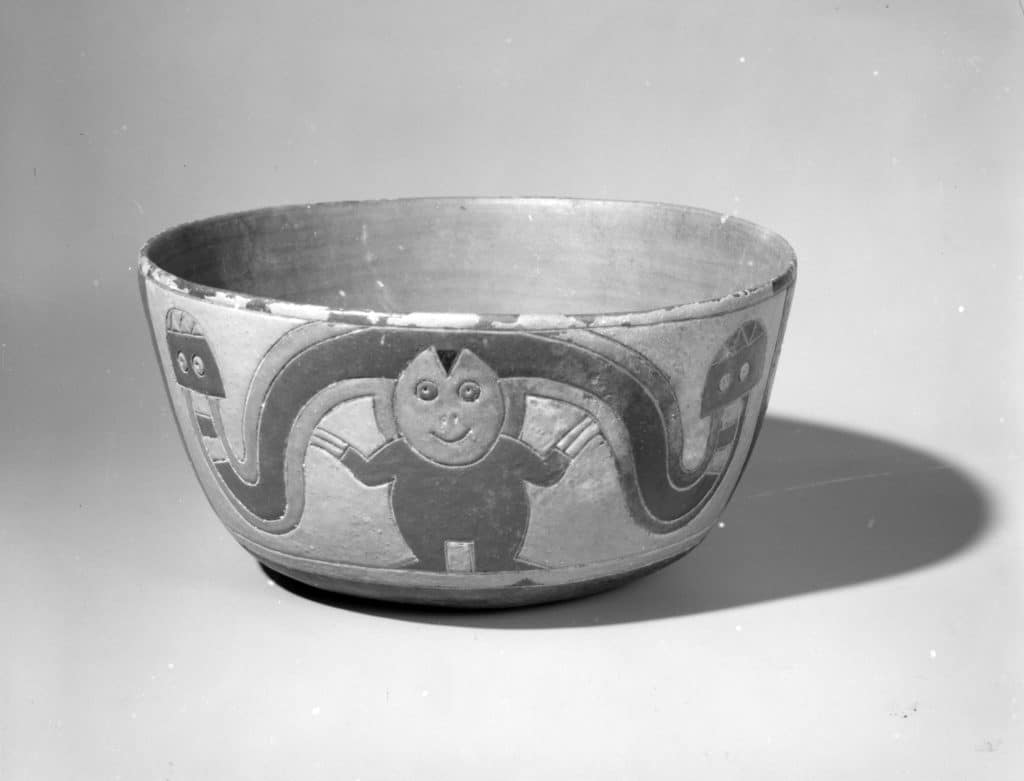
We have a large amount of art remaining from the Paracas culture of ancient Peru, with various depictions of mushrooms. The above bowl shows a playful-looking character with two mushrooms sprouting off to the side.
Perhaps the most impressive representations, however, are the tapestries that remain — some of which feature shamanic figures mid-flight.
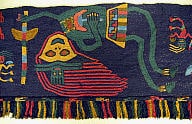
Notably, flight was considered to be a power the shaman could possess through the mushroom, and this image is part of a long line of shamanic figures happily flying with their fungi.
Mushroom representations in Paracas culture seem to intermingle Amanita and Psilocybe mushrooms, indicating the potential use of both.
Moche (Mochica) Culture and Mushrooms (Coastal) (100 BCE–800 CE)
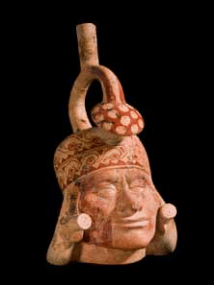
While the Mochica culture was in Peru, they created beautiful ceramic figurines, including the one pictured above. According to researchers, they had several ways of including mushrooms within their artwork, ranging from obvious and transparent (like the above) to hidden or symbolic.
Like the Paracas culture before them, the Moche culture utilized and created representations for both Amanita and Psilocybe mushrooms, along with others. Potentially “representing medical and perhaps spiritual use of mushrooms.”
Wari/Huari Mushroom Symbolism (Highlands) (500–1000 CE.)
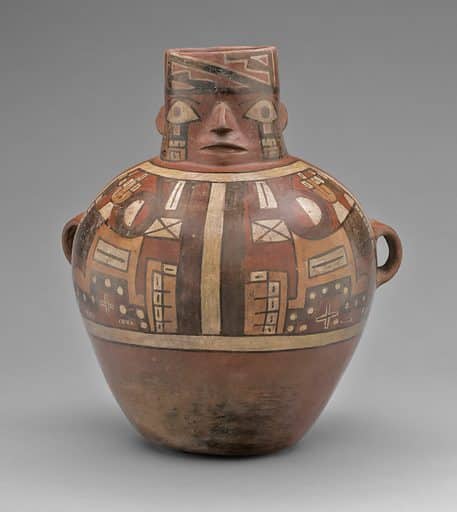
Wari mushroom represents elements of several other cultures as it grew to take over much of modern-day Peru. Some of these are quite obvious, and others are a bit more hidden.
The vase above features an anthropomorphic figure in a state of awe. Underneath the eyes are two black bars going down to the neck, resembling a mushroom when taken together.
Additionally, an argument is possible for the yellow lines going along the “stem” to represent the ring the Amanita leaves after its cap opens. Other, more straightforward examples make it clear mushrooms didn’t take a break during the reign of the Wari people.
Chimú Mushroom Symbology (Coastal) (900–1470 CE)
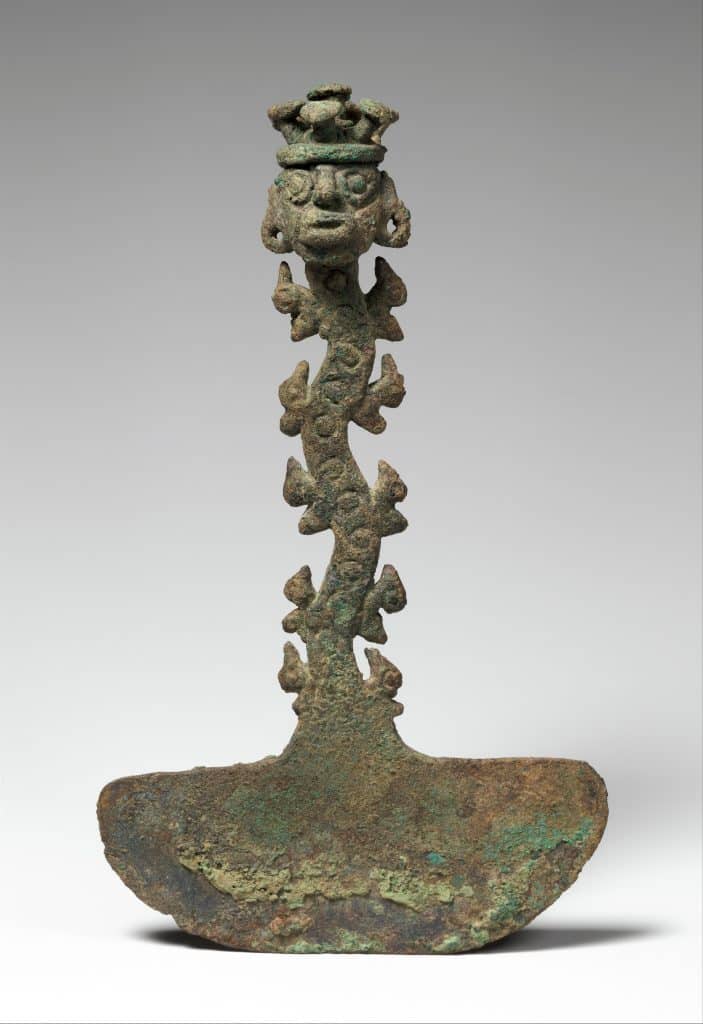
A “tumi,” like the one above, was the instrument of choice for ritual sacrifices for the Chimú culture. This one features a wavy handle with birds perched on the handle and a head with mushrooms (Amanita’s, seemingly) growing out of the top of it.
Additionally, researchers argue the instrument itself is shaped like a mushroom, indicating a potential for mushrooms to be a large part of the ritual. Tapestries and other artwork show the new civilization largely held on to the mushroom practices of the Moche culture preceding it.
Mushroom Symbology Among the Incas (Highlands) (1200–1532 CE.)
The Incas were in power over much of Peru when Spain descended upon them. As they were accustomed to doing, they took anything that was gold — largely melting it down — and burned the rest.
As such, much of the history of this once-powerful nation is even harder to come by than the ones predating it. However, unlike the Spanish, the Inca empire had a habit of picking up the customs of countries it took over.
One of these customs was very likely the use of psychedelic mushrooms. We have clear examples of this as well from at least one of the remaining artifacts — a mushroom-shaped pendant [8].
Though the artwork is scarce from this period, we have several other sources confirming psychedelic mushrooms played a definitive role in Inca culture.
Ancient Egypt Mushroom Symbolism
The concept of psychedelic use in Ancient Egypt receives a great deal of pushback since the evidence for it is quite scarce — or, more likely, metaphorical.
However, Stephen Berlant (a retired psychologist with a fascination for Egyptology) has set out to prove:
- References to mushrooms exist in the art and hieroglyphics of ancient Egyptians — including within tombs, signifying an important link with the afterlife
- Symbology for mushrooms within their hierarchical system shows the importance of mushroom usage (especially for the elite)
- Mushroom symbols appear throughout the religions of ancient Egypt, which may point to a “Mycolatrical Origin” — mycolatrical being the term for worshipping fungi [9,10,11]
Unlike other examples, Egypt’s mushroom symbolism is the topic of some debate. Many of the representations that appear as mushrooms are thought to represent onions — an important and, perhaps, revered object for debated reasons.
Let’s break down some of the cases for the more exceptional examples:
Ancient Egypt Mushroom Art
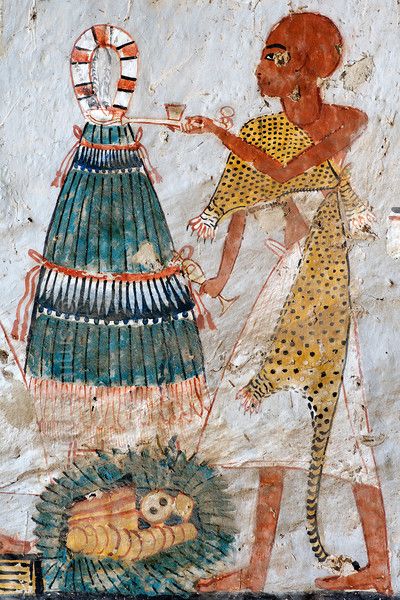
The above painting is from the tomb of a royal Egyptian scribe named Roy, who died sometime between 1292–1189 BCE. Many have pointed out the coincidental appearance between the mural and “a Christmas tree bearing an Advent wreath and red ribbons” along with presents underneath — but there might be more at play here [9].
Berlant explains the current belief around this painting to represent a large bundle of onions made as an “ascension bouquet.” The “gifts” below would be a collection of cakes and bread which are given as a burial gift.
This isn’t the opinion Berlant has, however.
He believes the red and white objects could represent Amanita’s, and the disks below could be their dried caps. By contrast, the onion “has a purple bulb with a relatively short green stem from which the plant’s leaves emerge.”
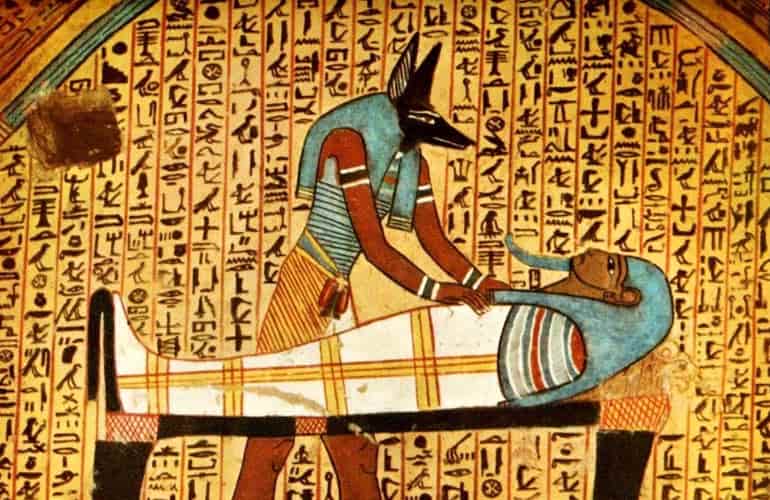
Here’s an example of another representation Berlant notes is frequent — depictions of Anubis working on mummies in multiple instances with mushroom-like designs [11]. Since Anubis was in charge of the afterlife, magic mushrooms may have played a role in the burial process.
Mushroom Symbols Within Egyptian Hierarchy
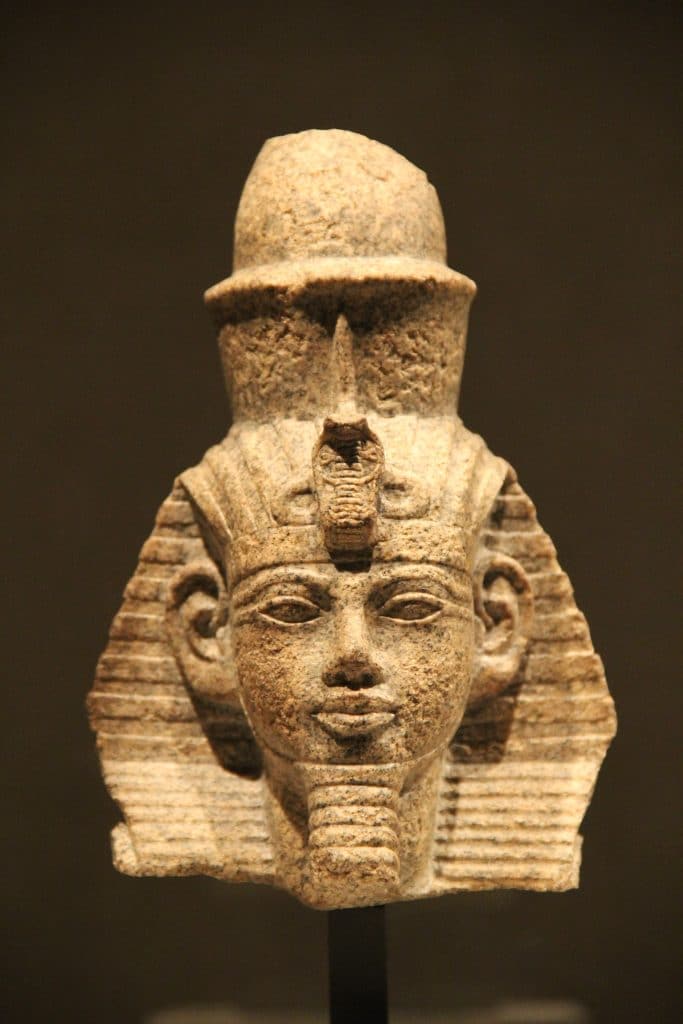
An ancient Egyptian papyrus text depicting five miraculous stories includes the tale of Cheops and the Magicians, detailing “how crowns were bestowed upon the newborn rulers of Egypt’s Fifth Dynasty [10].” The creation of the crowns in the story is extremely similar to the process of growing mushrooms.
Here’s a translation of the story starting right after the birth of the three new children:
Then Isis said to these gods, “What is it that we have come for if not to perform a wonder for these children that we may report to their father who let us come.” Then they created three lordly crowns, and they put them in the barley. Then they made the sky turn into storm and rain, and they returned to the house. They said, “Please put the barley here in a sealed room until we return from making music in the north,” and they put the barley in a sealed room.
The fifth dynasty places the setting of this tale at 2,500–2,600 BCE, and the document may be as old as 1,782 BCE, so these mythical legends were likely passed down for generations beforehand. Isis and the others came back two weeks later to unseal the room and reveal the “crowns.”
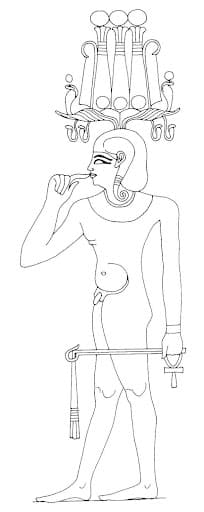
Berlant contends the crowns of Egypt largely depicted various stages of mushroom growth, culminating in the hemhem, or “triple crown.” This ceremonial crown may have represented the growth of multiple fruiting mushrooms.
Even the hieroglyph for “crown” looks like an upside-down mushroom:

Ancient Egyptian Religion & Mushroom Symbology
The paintings in tombs depicting mushrooms alongside Anubis are good examples of the potential mycological underpinnings of Egyptian religion. In the below depiction of the “opening of the mouth ceremony,” the late Pharoah Tutankhamun is being fed an ankh (the hieroglyph for immortality and life) by a character with a mushroom headdress and a bird on top.
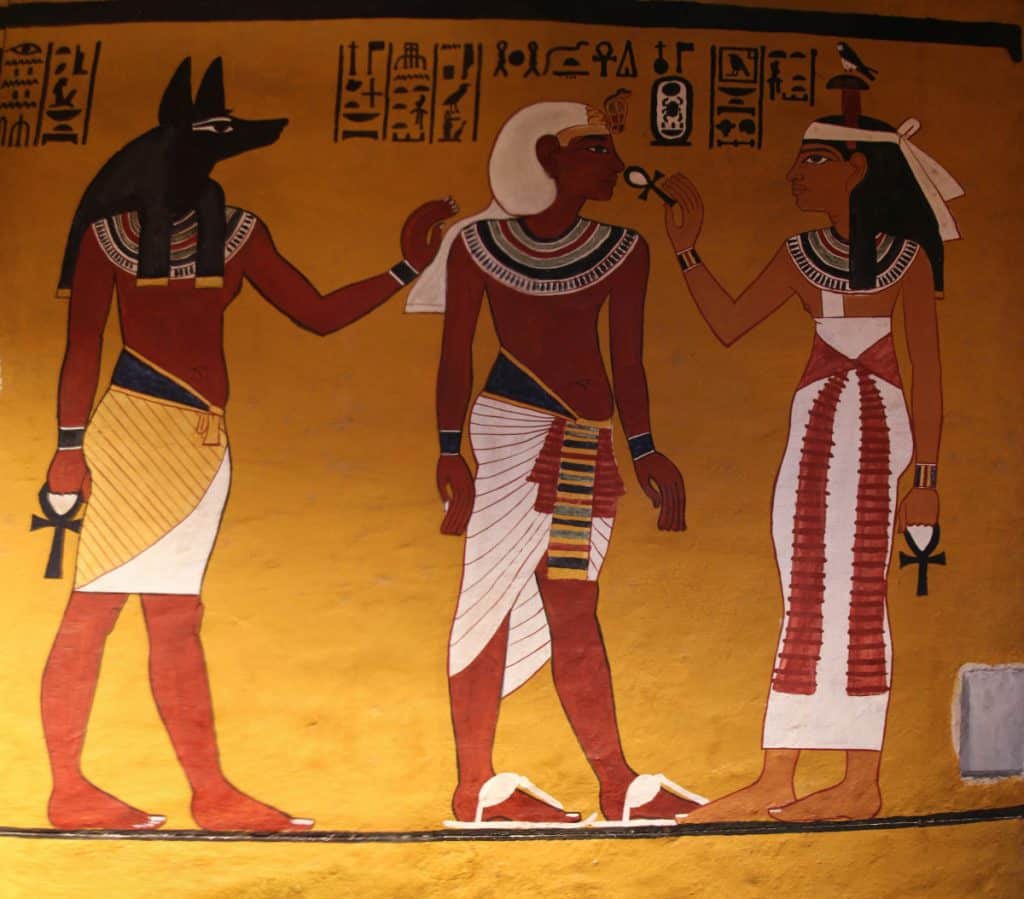
The bird on top likely represents Horus, among the most important deities in Egyptian religion. Berlant contends there is likely a deeper mycological origin underpinning the religions of ancient Egypt than we’ve looked into.
Here are a few examples:
- The Ankh symbol itself may represent the Amanita with the detached veil and the meaning of immortality and vigor.
- With the close relationship between the ancient Egyptian church and the state, the mushroom symbolism of the hierarchical structure represented in the crowns was likely an extension of religious practices.
- Osiris, the god of the underground, may have been a representation of a mushroom himself, often standing in a “mushroom-like” pose.
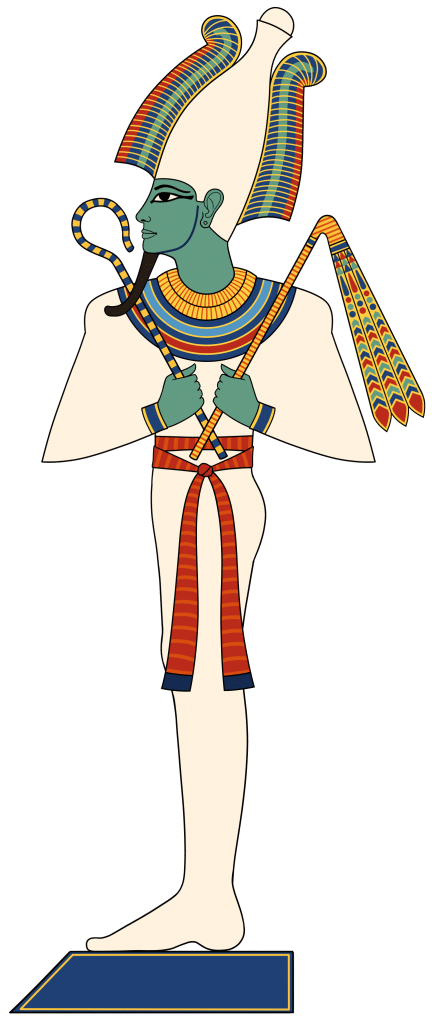
Berlant even goes so far as to say the Eye of Horus — an important hieroglyph, especially within the art of tombs — may represent a mushroom. While we don’t often think about it as such, some texts refer to the symbol as an ingredient for various recipes.
Could it have represented Amanita or Psilocybe mushrooms?
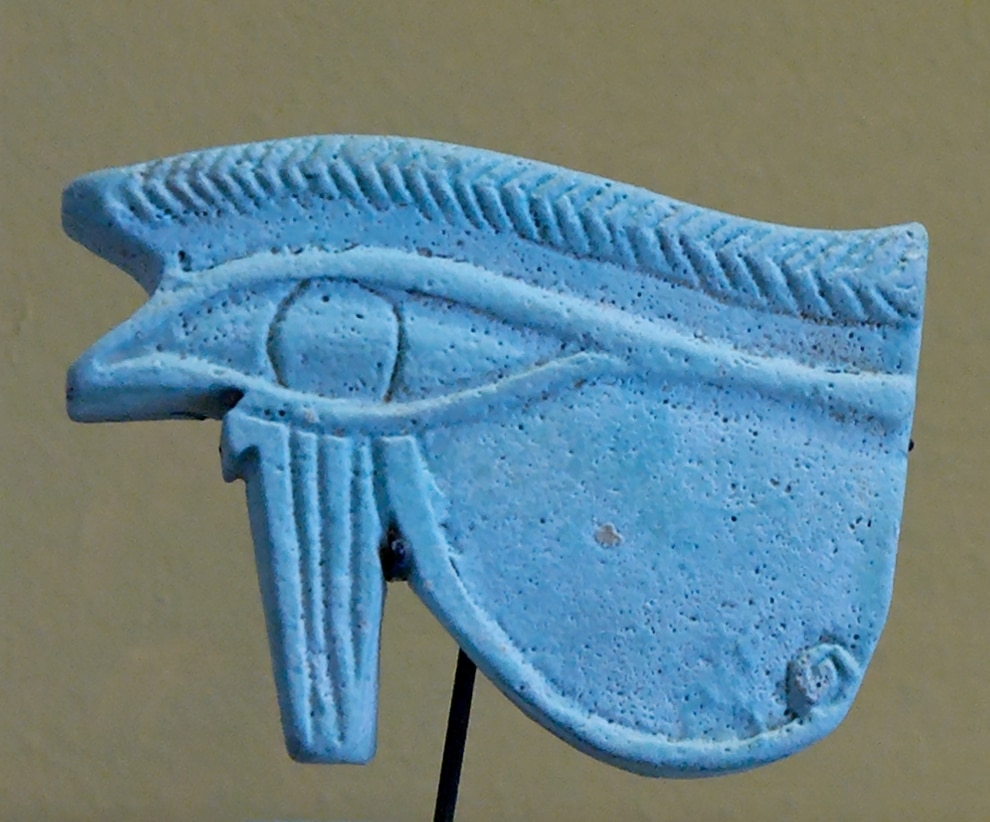
Ancient Greco-Roman Religious Mushroom Symbolism
If you’ve spent any time digging into prehistoric psychedelic potential, you’ve likely come across the mysteries at the ancient Greek temple in Eleusis. We still don’t know what happened within these highly-secretive initiation rituals, but we do know it involved a heavy amount of intoxication.
The annual tradition lasted for over a millennium and only stopped around 330 CE. At this time, Plato, Augustus, and several other notable Hellenistic characters all went through the exclusive rites.
In the years since, researchers have made several attempts to explain — or, occasionally, downplay — the mysteries that took place. One such theory is the use of mushrooms (either/both Amanita and Psilocybe) to achieve the transformative state they were seeking [12].
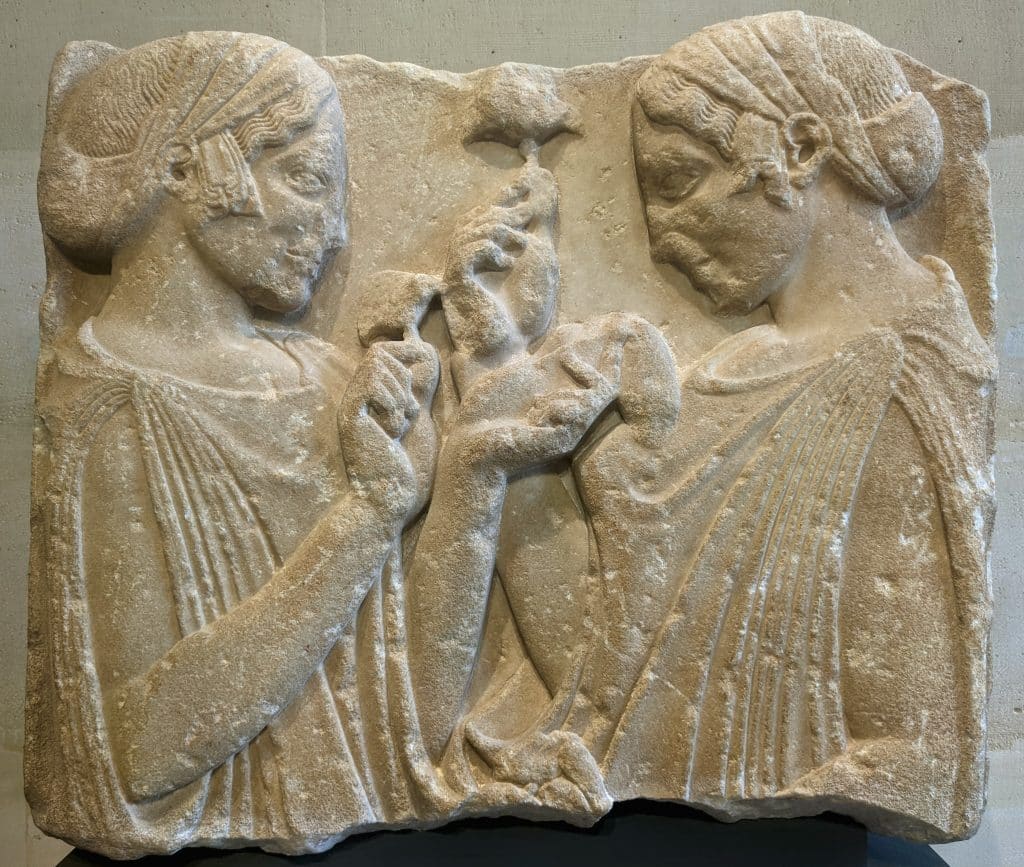
The above artwork (taken from an Eleusinian site) is often described as depicting the goddesses Persephone and Demeter exchanging flowers. Several researchers have challenged this, noting the resemblance between the objects and mushrooms — not to mention the rituals of the location it comes from.
While we’ll never have conclusive evidence surrounding what was in the restricted drink given out at these ceremonies, psychedelic fungi make sense. These were transformative events and were regarded in high enough esteem to keep them secret and ongoing for over 1,000 years.
It seems unlikely, as some have tried to suggest, this would come from something as simple as alcohol or meditative states. Amanita and Psilocybe both grew in the area and would have been easy to access.
Ancient Asian Mushroom Symbolism
Asian culture is often removed from the conversation around psychedelics. The inclusion of intoxicating mushrooms in early Hindu and Buddhist culture is a subject of great debate, but there is certainly a case to be made for it based on the symbology they left behind.
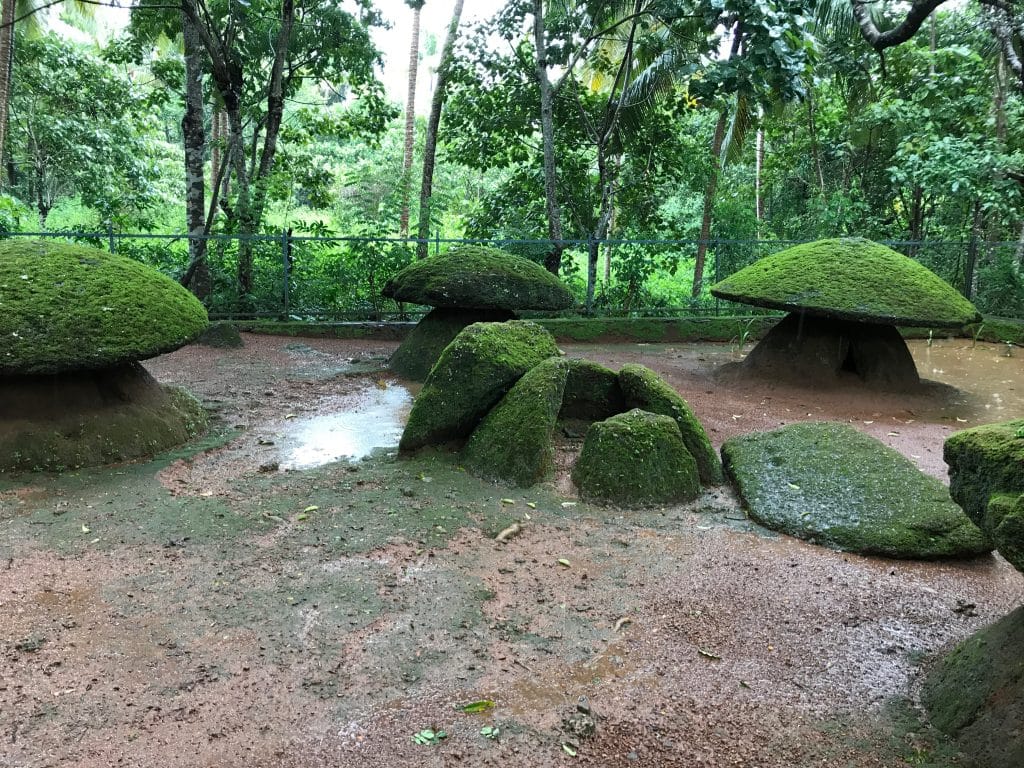
In the above photo — some of which date back to 1,000 BCE — megalithic mushroom stones, often called either umbrella or hat-stones. Quite a bit of debate centers around the purpose of these and what they intend to represent, but a growing number of archaeologists are starting to believe they are indeed mushrooms [13].
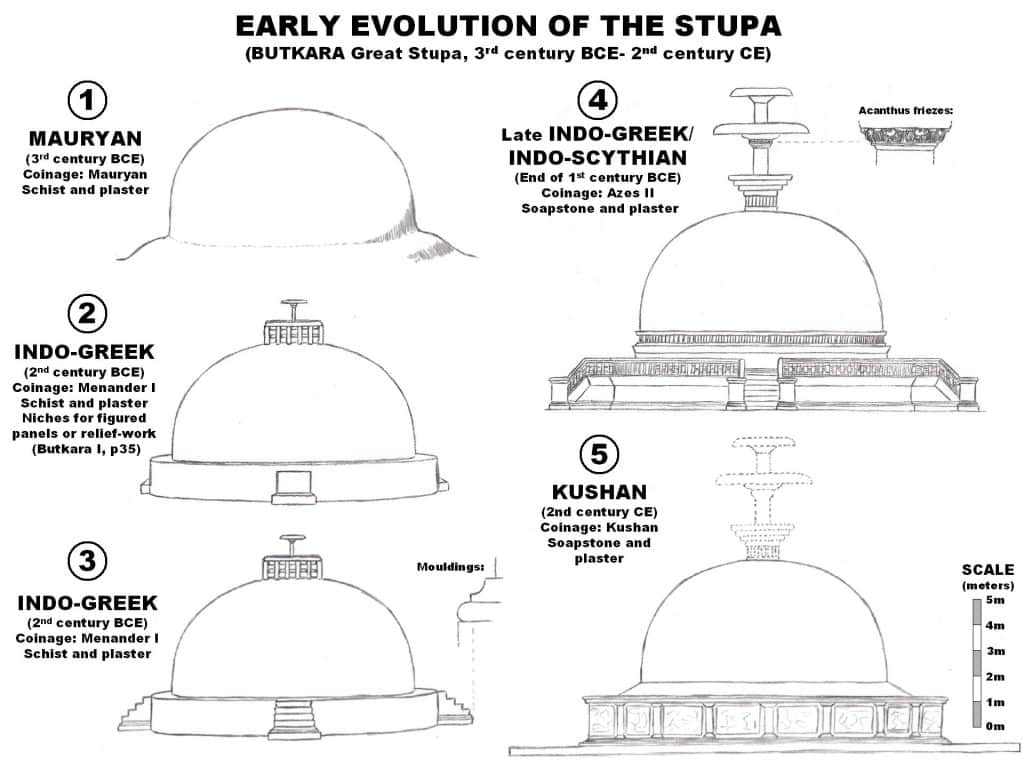
Another common theory for these is their representation of an umbrella, something that would have represented status and nobility. However, some believe this is backward: the mushroom-shaped stones may have influenced the Buddhist “stupa.”
The stupa was a form of architecture involving a large mushroom-like dome — which was then associated with the umbrella as a sign of nobility [14].
This may point to the umbrella motifs and emphasis on domed appearances being a result of an influence from psychedelic mushrooms. However, there are plenty of other symbols hidden in plain sight:
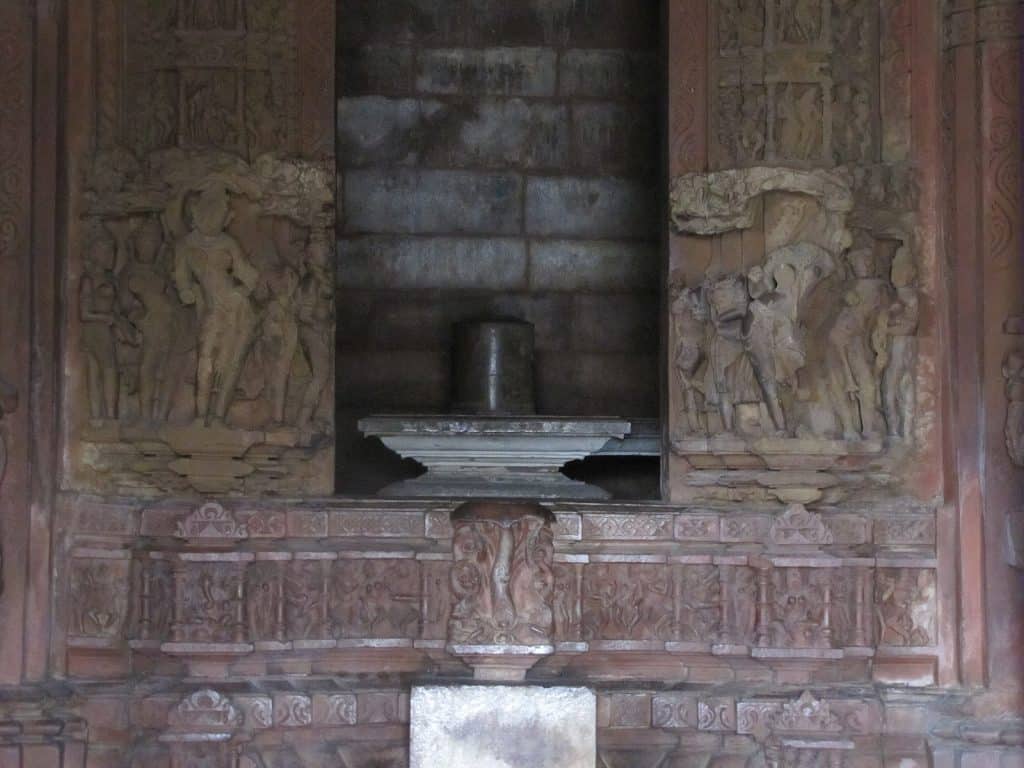
The above altar sits within a Buddhist temple in India dating back to nearly 1,000 CE and depicts a clear mushroom image. As this was a mere 1,000 years ago, mushrooms may have even been a part of the religion more recently than we might expect.
Implications of Magic Mushroom Symbolism
The ancestral importance of psychedelics should force all of us to stop and consider how we view and relate to them. Magic mushrooms are just one psychedelic popular in ancient cultures, but there are so many more.
Whether it’s peyote/san pedro cactus, blue lotus flower, cannabis, opium, or any number of other natural drugs, humans have been a fan for longer than you could imagine.
We treat mushrooms like they grow in our closet over a month and a half, but they don’t. Mushrooms have grown since before humans even had ancestors to evolve from, and they’ll continue growing when the last one of us is gone.
They’re not here for humanity, but humanity has frequently centered religions, civilizations, and more around them. There’s a weight that we can’t feel when we turn mushrooms into our personal tools instead of viewing them with the ancient power and wisdom they possess.
Don’t believe me? Try imagining you had the opportunity to meet the artists from 10,000 years ago — how do you think they’d react to showing them the mushroom symbology on commercialized psychedelics today?
References
- Hoffmann, D. L., Standish, C. D., García-Diez, M., Pettitt, P. B., Milton, J. A., Zilhão, J., Alcolea-González, J. J., Cantalejo-Duarte, P., Collado, H., de Balbín, R., Lorblanchet, M., Ramos-Muñoz, J., Weniger, G.-Ch., & Pike, A. W. G. (2018). U-Th dating of carbonate crusts reveals the Neandertal origin of Iberian cave art. Science, 359(6378), 912–915. https://doi.org/10.1126/science.aap7778
- Samorini, G. (1992). The oldest representations of hallucinogenic mushrooms in the world (the Sahara Desert, 9000-7000 BP). https://www.semanticscholar.org/paper/The-oldest-Representations-of-Hallucinogenic-in-the-Samorini/
- Akers, B. P., Ruiz, J. F., Piper, A., & Ruck, C. A. P. (2011). A Prehistoric Mural in Spain Depicting Neurotropic Psilocybe Mushrooms? Economic Botany, 65(2), 121. https://www.academia.edu/1376610/
- Another Look at the Pegtymel Petroglyphs on JSTOR. (n.d.). Retrieved July 29, 2023, from https://www.jstor.org/stable/25780681
- Shamanism, Totemism, and Rock Art: Les Chamanes de la Préhistoire in the Context of Rock Art Research | Cambridge Archaeological Journal | Cambridge Core. (n.d.). Retrieved August 13, 2023, from https://www.cambridge.org/
- Mérida Ponce, J. P., Hernández Calderón, M. A., Comandini, O., Rinaldi, A. C., & Flores Arzú, R. (2019). Ethnomycological knowledge among Kaqchikel, indigenous Maya people of Guatemalan Highlands. Journal of Ethnobiology and Ethnomedicine, 15(1), 36. https://doi.org/10.1186/s13002-019-0310-7
- Feeney, K. (2013). The Significance of Pharmacological and Biological Indicators in Identifying Historical Uses of Amanita Muscaria (pp. 279–318), from https://www.researchgate.net/publication/280051645/
- Trutmann, P. (2012). The Forgotten Mushrooms of Ancient Peru. https://doi.org/10.5281/zenodo.7626547
- Berlant, S. (n.d.). An Egyptian Christmas Tree in the Tomb of the Royal Scribe Roy20191222 65802 1y06dkj. Retrieved August 1, 2023, from https://www.academia.edu/41389537/
- Berlant, S. R. (2005). The entheomycological origin of Egyptian crowns and the esoteric underpinnings of Egyptian religion. Journal of Ethnopharmacology, 102(2), 275–288. https://doi.org/10.1016/j.jep.2005.07.028
- Berlant, S. (n.d.). Introduction to the Mycolatrical Origin of Egyptian Religion: Why Identifying the Many “Mushroom-like Objects,” in Egyptian Art as Mushrooms Can Explain Those Objects and Ancient Egyptian Religion Far Better than Egyptologists Have. Retrieved August 1, 2023, from https://www.academia.edu/40896975/
- Bizzotto, J. (2018). The hypothesis on the presence of entheogens in the Eleusinian Mysteries. Medicina Historica, 2(2), Article 2. https://mattioli1885journals.com
- Winkelman, M. J., Allen, J. W., Lamrood, P. Y., Maillart-Garg, M., Sinha, B. L., & Shah, N. C. (2022). Does India have entheomycology traditions? A review and call to research. Indian Journal of Traditional Knowledge (IJTK), 21(2), Article 2. https://doi.org/10.56042/ijtk.v21i2.41098
- Samorini, G. (2001). New Data from the Ethnomycology of Psychoactive Mushrooms. International Journal of Medicinal Mushrooms, 3(2–3). https://doi.org/10.1615/IntJMedMushr.v3.i2-3.1670

